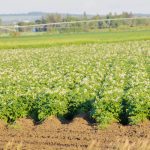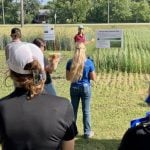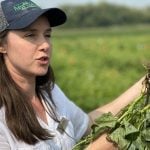It’s starting to feel like we are living on the Prairies of old again when farmers and small town inventors built their own gear to meet local needs at affordable prices.
The work generally involved a shop, good tools and a couple of winter months between crops.
But today with computers controlling most modern farm machinery, most producers limit their customizations to swapping out their OEM engine controlling black boxes for aftermarket units.
Ownership of the technology that resides in farm equipment is generally proprietary and exclusive and, until last week, largely thought of as no place for inventive farmers.
Read Also

Farm groups are too amiable with the federal government
Farm groups and commodity groups in Canada often strike a conciliatory tone, rather than aggressively criticizing the government.
Then along came southern Manitoba farmer Matt Reimer and his autonomous harvest grain cart. You can read about it on page 64 of this week’s paper or on producer.com.
Reimer used the open source technology that is used in radio controlled drone aircraft, along with an Outback steering valve and some sensors, to hand off control of one of his tractors to some software and satellite positioning.
This farmer’s desire to have what he needs and to make more out of less is in the same tradition as the inventors who brought us reduced-tillage and air seeding.
Both John Deere and Kinze already have this tool, but Reimer has created a farm-built bridge between computers and iron moving in the field. While this might have been possible before, the tools seemed inaccessible.
This young Manitoba farmer has opened the shed doors to our imaginations.
Could these tools be used to bring tender carts to the seeder or sprayer? Yes. Could it create a second, drone seeder that follows or leads a unit with an operator? Yes. Could it harrow? Sure. How about slowly move a controlled grazing fence? OK.
There are a lot of considerations when it comes automation and autonomous control.
The Prairies is a relatively small market with special needs and farmers here have a history of modifying and refining things to suit their own needs.
We have just been offered the ability to build some new tools.














